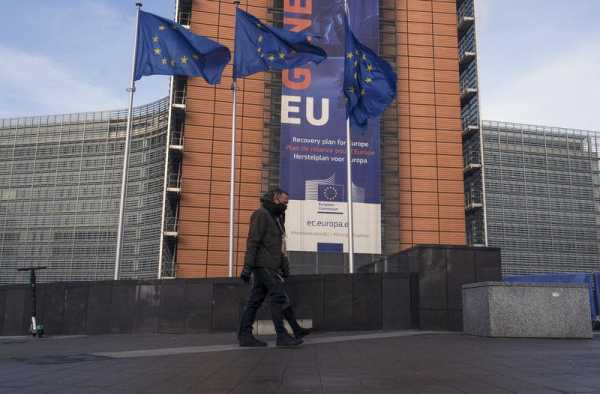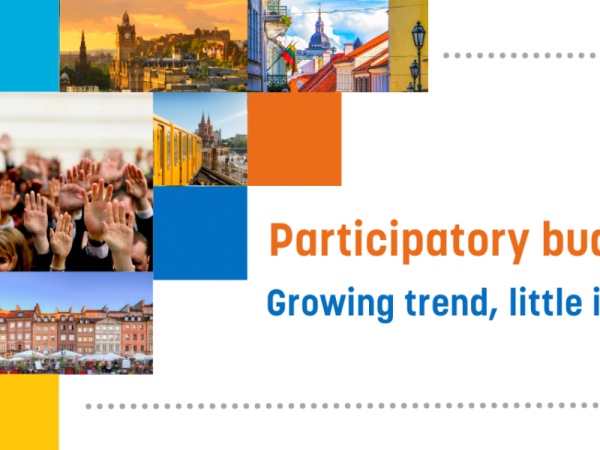
Experts and lawmakers are making a case for a co-decision process allowing European citizens to have a voice in deciding how the EU budget is allocated, which could strengthen citizen participation and drive sustainable economic growth models across member states.
The EU institutions have recently implemented a series of deliberative exercises, such as the citizens’ panels and the Conference on the Future of Europe, to involve citizens in EU decision-making processes better.
According to some activists and experts, however, there could be space for another democratic tool called participatory budgeting (PB) to allow Europeans to decide how to allocate a part of the EU budget.

Should European citizens dictate the bloc’s budget?
MEPs and experts propose to scale up a city-level tool allowing citizens to decide how to spend a part of the municipal resources and let Europeans shape the EU budget expenditure.
Beyond consultation
“I think that [PB] would certainly be a very strong message for citizens that the EU wants to empower them,” Elisa Lironi, programme director at the European Citizen Action Service, said during a debate organised by EURACTIV, adding that the EU could test PB through a pilot programme.
Currently, PB is mostly used at the municipal level to ask citizens to propose and vote for initiatives to be implemented through the local budget. While there are some cases at regional and national levels,to be determined this exercise has never been implemented at the European scale.

Participatory budgets: growing trend, little impact?
More and more European municipalities are turning to a co-decision tool allowing citizens to decide how to spend local resources, but its impact remains uncertain as low participation levels and limited investment in the process hinder the participatory exercise.
The process, …
In Lironi’s view, such a participatory tool at the EU level would help European citizens understand that they can have a very concrete impact on EU decision-making processes as “it ranks really, really high on the participation ladder.”
“The added value of participatory budgeting is the fact that even though usually you use a small investment budget, […] it is much more concrete than other types of participatory democracy practices,” she explained.
The use of PB at the EU level was also promoted by a European Parliament report back in 2021.
“We have to introduce new tools and forms of referendum where a dialogue is not enough,” MEP Helmut Scholz, rapporteur of the report, said during the discussion.
He pointed to the potential role of PB in increasing trust in the European institutions while also better informing citizens and considering their expectations when designing the EU budget.
At the same time, experts warned of the challenges around implementing such a process at the EU level.
Challenges of scaling up
According to Andrea Erdei, a policy analyst at the European Commission, such a tool can give citizens “an appetite and more enthusiasm and motivation to get engaged.”
However, she added, “in our multi-level governance system in the European Union, there are many layers of decision-making and many players to follow the project through.”
In her view, it is not possible to “move away from representative democracy,” also given the different political and cultural environments across member states.
According to Lironi, if a PB pilot project were implemented, it would need to be supported by effective communication efforts, including at the local and national levels.
“The EU can’t do this alone, the EU will need to have stakeholders on the spot to convince citizens of why participatory budgeting is important at that level,” she said.

A seat at the table? Europeans’ place in EU decision-making
From petitions and consultations to the European Citizens’ Initiative and citizens’ panels, the EU has several tools in place allowing Europeans to have their say on EU policies. But how effective are these participatory and deliberative tools?
To learn more about …
A European model for PB
Despite these limitations, supporters of PB see the tool as key in moving towards more sustainable economic growth models.
“It can actually facilitate effective and efficient decisions regarding how resources are allocated,” said Philip von Brockdorff, economist and member of the European Economic and Social Committee (EESC).
“Clearly, this would support the European Union’s ambition towards a more sustainable economic growth path,” he added.
At the same time, this can only be achieved by increasing participation in existing PB processes and expanding the tool to other EU countries where the process is not yet common, he said, pointing at the role the EU could play in promoting the tool.
“I think this is where the European Commission can actually [provide] support in terms of setting up or providing a model or a framework, which can be replicated across the European Union,” he said.
[Edited by Alice Taylor]
More on the same topic…

More than €600 million Recovery loans in the hands of few Greek businessesIn today’s edition of the Capitals, find out more about the Swedish majority being down to one seat as a far-right MP resigns amid a conspiracy scandal, the Spanish labour minister and trade unions urging employers to strike a wage increase deal, and so much more.
Source: euractiv.com



